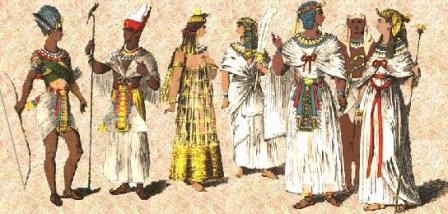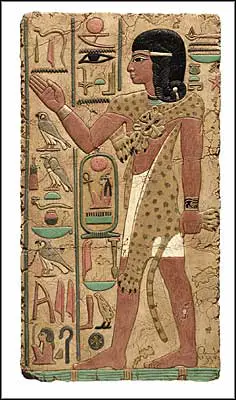A religion-oriented society is bound to give immense respect and regard to the priests, the souls of sacred knowledge. High Egyptian Priests were appointed as the Pharaohs could not perform all ceremonies everywhere.
The priesthood has highly rooted in Egyptian traditions. Priests often passed down their positions from father to son. They enjoyed great power and wealth in Egyptian society. Neglecting the needs of gods, it was believed, would invite problems.

Funeral rites, the teaching school, supervising the artists and works, and advising people on problems were performed by them.
In the morning, the high priest breaks the seal, lights a torch to walk the god, says prayers, lights incense, washes the statue places fresh clothing and jewels on it and places offerings of food and drink near it.
Singers offer hymns of praise to the god. At the end of the day, the priest backs out of the shrine, sweeping away his footprints as he goes, and seals the sacred area again.
New Egyptian Priests

New Egyptian Priests were often chosen by the Pharaoh. Often, the Pharaoh would choose relatives to fill positions in the most powerful and influential temples. Priests were transferred and promoted by the Pharaoh. Priests had certain requirements to meet while they performed their duty. Ritual purity was important.
They were only allowed to wear linens or clothing made of plants. Articles of clothing that were made from animals were not permitted. They were required to shave their heads and bodies daily.
Temples were adjoined by lakes from where they had to take cold water baths. During temple duty, a priest had to shave off all his bodily hair, even the eyebrows. They had to practice sexual abstinence.
The sacred scrolls are read out loud by the “Kher Heb”, the lector priest, who is obliged to read them directly from the papyrus book held open in his hands. He has to recite them exactly as they are written. Hem Netjar or the high priest was to take care of the god and the god´s needs, to act as a servant of the god.
Women from noble families were accepted as “Hemet Netjers” already in the Old Kingdom. Usually, they were attached to the goddesses. The High Priest is also called the First Prophet and could in his turn delegate Second, Third and Fourth Prophets as deputies.
The priesthood was divided into four phyles, i.e. groups, and each phyle worked one month out of three. The god, in the form of a statue, was housed in a shrine, the naos, which was built of stone or wood and was located in the innermost chamber of the temple. The statue could be made of stone, gold or gilded wood, inlaid with semi-precious stones.
Then food and drink were put before the god. This was a display of the best that could be found; joints of meat, roasted fowl, bread, fruits, vegetables, beer, wine, and everything in large quantities, out of the temple´s own kitchens, gardens, and farms, and of superior quality. The offerings always included flowers.
